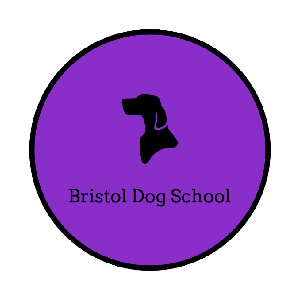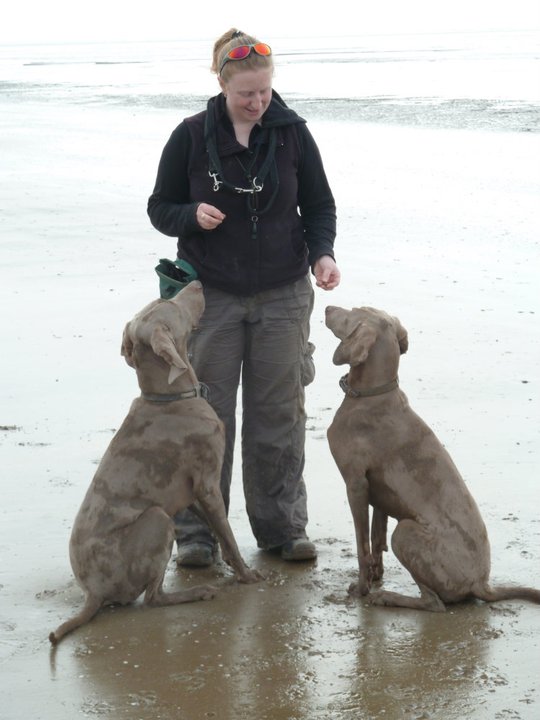|
Science based training
The methods of training we use at Bristol Dog School are based on science and research. This means the methods have been tested observed and statsitically measured to study the results they have on our dogs, You may have have heard of some of the big names in training and behaviour science who started this movement. Edward Thorndike and his law of effect which led on to research by Ivan Pavlov and his dog and B.F Skinner and his skinner box.. This research is what we base our methods on now We continually learn by reading and attending training courses and seminars to keep up to date on the research and to learn from our peers while we and current researchers refine the methods and theories. Below is a brief overview of some of the training methods we use to help you to train your pups and older dogs. We will never force a dog to anything it is uncomfortable with and we certainly won't punish your dog. How do dogs learn? Classical or Pavolvian conditioning This is and associative learning process where the dog hears or sees something that is not normally paired to a behaviour just before it reacts and then there is a consqence. Initially the bell has no assiciation to the salivating behaviour or to eating, but over time the sound of the bell will cue a response salivation which is then rewarded with the food. But in time if the dog hears a bell it will now salivate even without the food needing to be present. The behviour is involutary the dog hears the cue and can't help it's self Cue > behaviour > reward Bell > salivate > eat food Operant or Skinnerain conditioning Is a consiquence learning process the cue for the behaviour happens when the behaviour is either punished or rewarded through trial and error. the response is under the control of the dog so it makes the choice and the right choice is rewarded for instance getting your dogs lead you teach your dog to sit and be calm while you put its lead on the controlled behaviour is sitting and being calm and the result is the dog getting to enjoy it's walks. When training any dog we must take into consideration any breed specific behaviours, the dogs personality and also it's previous learning. Some methods excite dogs and if you already have a dog that is easily exicted this can hinder the dogs learning, equally if you have a dog that needs motivation some methods may really help to encourage learning. The Basics The Cue The Cue is how you label a behaviour for instance, sit, down, stay....... The Cue always comes before the behaviour never at the same time or after. Marking and rewarding and reinforcement This is how you let your dog know they have done something right and a reward will be on it's way the two are always paired and no matter what training method you use you can always use mark and reward to reinforce the behaviour. Smith and Davis, (2008) say that the use of mark and reward training or clicker training reduces the instances of extiction this means the animal forgetting a behaviour is takes longer to happen. You really don't need to use a clicker, honestly clickers going off drive me up the wall and some dogs really don't like the sound either. But I still this use the mark and reward method to let dogs know they've got it right, instead of a click I use a marker word "yes". The mark and reward always come after a correct behavour if you mark and don't reward your dog will become confused and the mark effectivness is reduced. Learning often starts with continuous reinforcement but as the dog gets better then we move to intermittent reinforcement this means the dog has to work harder because it's not sure when the mark and food reward is going to come, a bit like a gambler they keep going when they're loosing becuase when they win it will be amazing and worth it for the reward. The Methods Luring This is the one you have probably seen the most. Luring is fast it's about using a food reward and getting your dog to follow it. the best example of this is luring a puppy into a sit So what does a lured sit look like? Put food lure on pups nose Say "Sit" Lure up and over the pups head pups bum goes down you mark (click / Yes) and reward *Some trainers don't mark they just reward, with luring technique you can get away with this. Shaping This is incremental training where you set a list of criteria that you want your dog to meet. it's slower than luring but also very effective So you want to shape a platform stationing behaviour you'll need to decide what your increments are going to be. Also reward delivery in shaping is often not direct from your hand to the dogs mouth, many trainers will throw the food away. This moves the dog away so that they are encouraged to come back to try again for another reward. 1. look at platform - mark and reward 2. sniff at platform - mark and reward 3. touch the platform - mark and reward 4. putting a paw on the platform - mark and reward 5. putting two paws on the platform- mark and reward With each increment we are looking at getting the dog repeating successfully most of the time before we move on to the next increment and wait for the dog to offer that And so on until you have incrementally shaped the behaviour you want the last part is to add the cue for the behaviour. This process can initially be frustraiting and confusing for dogs but once they understand the concept they often become faster at it, which reduces frustration as they are being rewarded quickly. Capturing Capturing is when you mark and reward a behaviour you see your dog exhibit that you want to encourage. this is not a behaviour that you have shaped or lured. the dog will give it naturally and you decide you like it and want to reinforce it so that you can eventually get it on a cue, captureing is probably the slowest of the regularly used methods to train your dog. You see your dog stretch and this looks like a really good bow. His front paws stretch out and his bum stays up in the air, and you want to capture this and get it on a cue. And this is why this method is so slow, you need to watch and wait for him to to give this behaviour, you then mark and reward straight away. Then you have to wait until the next time he does this behaviour, if you're lucky they may do it a few times a day after a nap but some dog may only do it once a day and then you have to be super vigilant to mark and reward the behaviour when they do it. Do as I do This is social learning from watching others be that other dog or you for many years we didn't think dogs could do this but thanks to the research of Claudia Fugazza we now know that they do understand this and will watch us and others to learn. This method involves teaching a dog using lur and shaping behaviour and then teacing them to interract on a "do it" cue, you can then interract with different items and then ask them to "do it" and they will copy you. once the dog understands the concept, you should then be able to demonstrate other things and ask the dog to "do it" and it will copy. and Fugazza and Miklósi, (2015) do suggest that this method is more effective in the long run compared to shaping with a clicker. References Feng, L., Howell, T. and Bennett, P., 2016. How clicker training works: Comparing Reinforcing, Marking, and Bridging Hypotheses. Applied Animal Behaviour Science, 181, pp.34-40. Fugazza, C. and Miklósi, Á., 2015. Social learning in dog training: The effectiveness of the Do as I do method compared to shaping/clicker training. Applied Animal Behaviour Science, 171, pp.146-151. Smith, S. and Davis, E., 2008. Clicker increases resistance to extinction but does not decrease training time of a simple operant task in domestic dogs (Canis familiaris). Applied Animal Behaviour Science, 110(3-4), pp.318-329. Topál, J., Byrne, R., Miklósi, Á. and Csányi, V., 2006. Reproducing human actions and action sequences: “Do as I Do!” in a dog. Animal Cognition, 9(4), pp.355-367. |
AuthorClair Litster-Huckle has a BSc (Hons) in Animal Behaviour and Welfare and an MSc Animal Behaviour and Training and has studied Canine psychology and Canine diet and nutrition. Archives |
Proudly powered by Weebly

